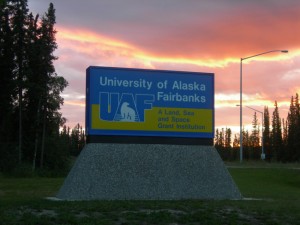There’s a large pool of applicants to be the University of Alaska Fairbanks next chancellor. In a wide ranging address to the Fairbanks Chamber of Commerce yesterday, interim UAF Chancellor Mike Powers updated members on the hiring process.

“The search committee has been formed of faculty, staff, students and administrators. We’ve met a number of times. Forty-one applications have been received. Vetting will occur in February…. Visits in March… Offer in April or May… And then transition probably in early summer.”
Powers, who was brought in last year to take over for retiring former chancellor Brian Rogers, has been guiding UAF through a tumultuous time, including review of its handling of sexual assault cases on campus, and a continued decline in state financial support. Powers says UAF is expecting another big budget gap in FY 17.
“FY 17 is projected to be $26 million. So that’s what we’re working against this year as we’re balancing the budget — a $26 million gap.”
Powers says the projected shortfall follows on those of three previous years which have totaled $42 million, resulting in the loss of 350 employees, and phasing out and consolidation of several programs.
“As we grapple with this economic challenge on our doorstep we’ll balance the budget. We’ll do so thoughtfully. There will be changes… But the focus will be delivering world-class Arctic research, meaningful graduate and undergraduate degrees, and workforce development initiatives through CTC that build a great community, great state and ultimately, a great nation.”
Powers would not predict how many more jobs might be lost. He does not solely attribute the budget situation to reduced state funding, additionally citing rising fixed costs, and below average UA tuition rates.
Dan Bross is a reporter at KUAC in Fairbanks.




